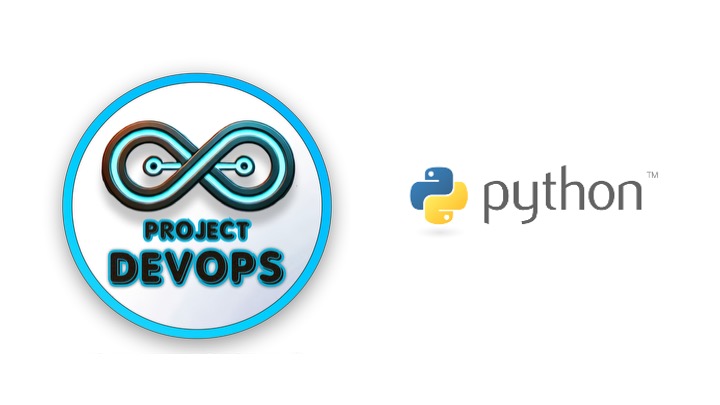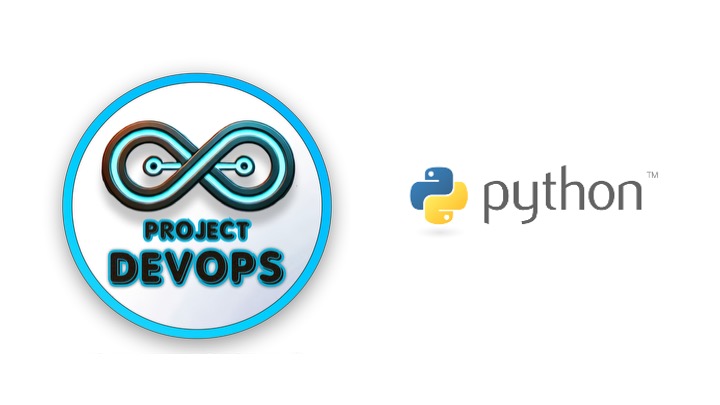Python and AI in 2025 – Trends and a Practical Example

Python’s versatility and extensive ecosystem have made it the de‑facto language for artificial intelligence (AI). As of 2025, it remains relevant thanks to its simplicity, readability and thriving communitysimplilearn.com. Libraries such as Pandas, NumPy and TensorFlow have entrenched Python as the preferred language for data science and AI applicationssimplilearn.com. Beyond data science, frameworks like Django and Flask drive web development, while its growing use in IoT, game development, visualization and cloud computing highlights its adaptabilitysimplilearn.comsimplilearn.com.
Why Python remains central to AI
Feature/LibraryHow it supports AIData science & AI librariesPandas & NumPy for data manipulation; TensorFlow & PyTorch for machine‑learning modelssimplilearn.com.Web frameworksDjango & Flask for scalable web apps and microservicessimplilearn.com.IoT integrationReadable & versatile; suitable for IoT devices and sensor controlsimplilearn.com.Performance improvementsPyPy and just‑in‑time (JIT) compilation improve execution speedsimplilearn.com.Educational adoptionEasy to learn; widely used in schools and online coursessimplilearn.com.
AI trends shaping 2025
A wave of AI innovations is intersecting with Python’s ecosystem. Some of the most notable trends include:
Generative AI everywhere – Generative AI tools like ChatGPT and image/video generators have been democratized and are now integrated into everyday applicationscoursera.org. This integration is enabling people without deep technical skills to create content, translate languages and augment searchcoursera.org.
AI adoption in the workplace – Organisations are increasing investment in AI and generative AI tools to automate repetitive tasks and boost productivitycoursera.org. IT leaders surveyed by Lenovo expect to devote 20 % of tech budgets to AI in 2025coursera.org.
Multimodal AI – New models can process text, images, audio and video simultaneously. This makes search and content‑creation tools more seamless and brings human‑like perception to devices such as smartphonescoursera.org. GPT‑4 and Gemini 2.0 illustrate these advances, offering better text understanding and multimodal abilitiesgeeksforgeeks.org.
AI‑accelerated research and health care – AI tools are being used as “co‑scientists” that help discover knowledge and accelerate medical researchcoursera.org. Chatbots are assisting in disciplines from agriculture to health care, although accuracy still requires oversightcoursera.org.
Regulation and AI ethics – The rapid adoption of AI has led to landmark regulations. The European Union passed a comprehensive AI bill in August 2024, and California began enforcing AI laws on January 1, 2025coursera.org. Ethical AI focuses on transparency, fairness and bias mitigation; Python libraries such as SHAP and LIME provide interpretable explanations of model predictionsclariontech.com.
Quantum‑enabled AI – Python frameworks like Qiskit and PyQuil allow experimentation with quantum algorithms. Quantum computing promises unprecedented computational power for cryptography, drug discovery and other tasksclariontech.com.
Edge AI and IoT – As IoT devices proliferate, real‑time machine‑learning models run directly on edge devices using Python and TensorFlow Liteclariontech.com. This reduces latency and reliance on continuous cloud connectivity and enables predictive maintenance in healthcare, manufacturing and logisticsclariontech.com.
Advancements in natural language processing – Transformer‑based models like GPT and BERT are enabling more human‑like interactions. Python libraries such as spaCy and NLTK underpin these advancesclariontech.com. Generative AI is expected to deliver hyper‑personalisation, conversational AI and multi‑modal experiencesgeeksforgeeks.org.
AutoML and democratized AI – Tools like AutoKeras and TPOT simplify model creation, allowing non‑experts to develop machine‑learning models. These AutoML tools will become more advanced in 2025, accelerating innovation and reducing the need for specialised expertiseclariontech.com.
Reinforcement learning in complex environments – Python frameworks such as OpenAI Gym and Ray RLlib are making reinforcement learning more accessibleclariontech.com. RL will be central to robotics, gaming and autonomous systems.
Specialised Python talent – With AI and automation technologies evolving, demand for developers proficient in Python’s AI frameworks is growingclariontech.com.
Future of generative AI – GeeksForGeeks predicts trends such as hyper‑personalisation, conversational AI, multi‑modal AI and increased focus on AI ethics and regulationgeeksforgeeks.org. Generative AI will also enhance automation, healthcare, cybersecurity and even integrate with blockchain for decentralised AIgeeksforgeeks.org.
Practical Example – Building an explainable sentiment classifier in Python
One of the easiest ways to explore AI with Python is through natural‑language processing. The example below walks through creating a simple sentiment classifier and interpreting its predictions. This illustrates two of the trends above: advances in NLP and ethical/explainable AI.
1. Prepare a dataset
For demonstration we’ll use a small, handcrafted dataset of positive and negative product reviews. In real projects you would gather larger datasets (e.g., from customer feedback or public reviews).
# Sample sentences labelled as 1 (positive) or 0 (negative)
sentences = [
"I love this product, it is amazing and works great",
"This is the best purchase I have ever made!",
"Fantastic quality and excellent performance",
"I am very pleased with the results",
"Absolutely wonderful experience, highly recommend",
"Disappointing product, it broke after one use",
"I hate it, completely useless and not worth the money",
"Terrible quality, I am very dissatisfied",
"It does not work as advertised, poor performance",
"Worst purchase ever, I regret buying it"
]
labels = [1,1,1,1,1,0,0,0,0,0]
2. Vectorize the text
We convert raw text into numeric features using a bag‑of‑words representation. CountVectorizer from scikit‑learn tokenizes the sentences and counts word occurrences.
from sklearn.feature_extraction.text import CountVectorizer
vectorizer = CountVectorizer()
X = vectorizer.fit_transform(sentences)
3. Train a classifier
We split the data into training and testing sets and train a logistic regression classifier. Logistic regression is a baseline linear model that predicts probabilities for binary classes.
from sklearn.model_selection import train_test_split
from sklearn.linear_model import LogisticRegression
X_train, X_test, y_train, y_test = train_test_split(X, labels, test_size=0.3, random_state=42)
clf = LogisticRegression(max_iter=1000)
clf.fit(X_train, y_train)
4. Evaluate and interpret
After training, we predict the test set and compute accuracy. To interpret the model, we inspect the coefficients associated with each word; positive coefficients suggest the word contributes to the positive class, while negative coefficients suggest the opposite. Libraries like SHAP or LIME offer more sophisticated explanationsclariontech.com, but examining logistic regression coefficients is a lightweight alternative.
from sklearn.metrics import accuracy_score
import numpy as np
# Evaluate accuracy on the test set
preds = clf.predict(X_test)
print(f"Test accuracy: {accuracy_score(y_test, preds):.2f}")
# Inspect feature weights
feature_names = vectorizer.get_feature_names_out()
coefs = clf.coef_[0]
# Sort coefficients to find top influences
sorted_idx = np.argsort(coefs)
top_negative = feature_names[sorted_idx[:5]]
top_positive = feature_names[sorted_idx[-5:]]
print("Top words associated with negative sentiment:", top_negative)
print("Top words associated with positive sentiment:", top_positive)
5. Use the model
To classify new text, transform it using the same vectorizer and call the model’s predict method.
sample = ["This product is not good and I do not recommend it"]
sample_vec = vectorizer.transform(sample)
print("Predicted sentiment:", clf.predict(sample_vec)[0]) # 1=positive, 0=negative
Discussion
Even this simple example demonstrates how Python can be used to build AI systems. To align with ethical and explainable AI trends, we used a model that exposes interpretable coefficients and discussed tools like SHAP/LIME for deeper insightclariontech.com. In a production setting you would:
Collect a larger, representative dataset and use advanced NLP models (e.g., transformer‑based models like BERT) to improve performanceclariontech.com.
Apply AutoML tools (AutoKeras, TPOT) to automatically search for the best model architecture and hyper‑parametersclariontech.com.
Use SHAP or LIME for model‑agnostic explanations to ensure transparency and fairnessclariontech.com.
Conclusion
Python continues to dominate the AI landscape due to its rich ecosystem, ease of use and constant innovations. Trends for 2025 point towards greater integration of generative AI, expansion of AI into the workplace and IoT, quantum‑enabled AI, sophisticated multimodal models, and heightened focus on AI ethics and regulationcoursera.orgcoursera.org. Tools like Qiskit, TensorFlow Lite, AutoKeras and SHAP are expanding what developers can do with Pythonclariontech.comclariontech.com. By staying aware of these trends and practising with examples like the sentiment classifier above, developers can prepare for the next wave of AI innovation.
Comments (0)
No comments yet. Be the first to share your thoughts!
